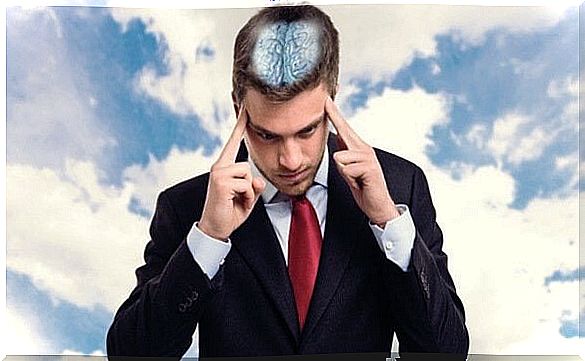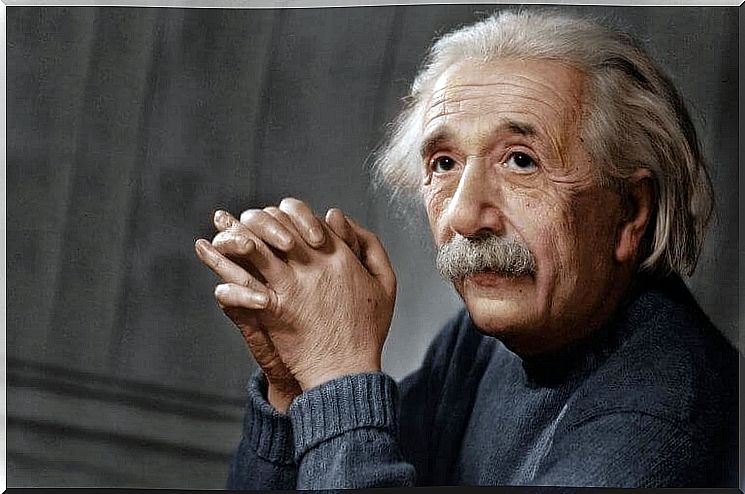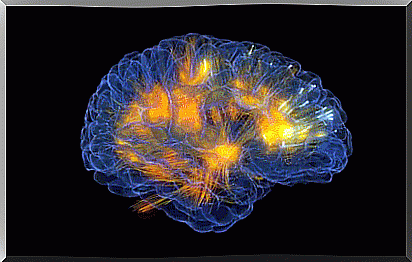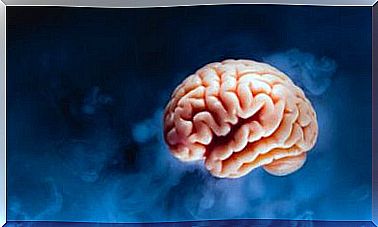The Fantastic Story Of Einstein’s Brain

The pathologist Thomas Harvey stole Albert Einstein’s brain after his autopsy in 1955, which led to great curiosity in the research world. There were many who wanted to learn the secret behind this genius. Others did not see the point in stealing his brain. In any case, the analysis became very interesting.
In fact, there are some scientific findings that are as fascinating as it is bothersome. There is a tragic nuance in this story, which also emphasizes man’s intense desire to get to know himself. Learning about the brains of people who changed the world is a powerful tool for discovering amazing things.
The father of relativity is one of these tools. Albert Einstein was also something else: an icon and a media figure who had a great social impact. He was well aware of this fact and gave very precise instructions on what to do after his death. He valued his private life and wanted to be cremated and for his ashes to be scattered in a river. After all this, his death could be told to the press.
But something went wrong. Something happened that no one had thought of: Thomas Harvey. This pathologist stole Albert Einstein’s brain after the autopsy. Einstein therefore became something he did not want to become: an admired relic.

Einstein died at the age of 76 on April 18, 1955 after a ruptured abdominal aortic aneurysm. A few days later he was cremated. His family was surprised when they read about what had happened. The New York Times reported that the nuclear physicist’s brain had been removed for use in a scientific study.
The person responsible for all this was Dr. Thomas Harvey. People said he was one of Einstein’s biggest admirers. He also had a reputation for having a split personality; a mix of a very introverted person and an obsessed scientist. Getting to examine Einstein’s brain was something he could not help but notice.
He was very careful when handling Einstein’s brain. He weighed it, dissected it and placed it in various jars. He then kept it in the basement of his house. He was not a neurologist, so he had a goal that was as simple as it was ambitious. He wanted to gather the best specialists in the world to study every part of the brain in detail, every fragment, every cell. His goal was to publish what he had found as soon as possible and become world famous.

Of course, he did not get what he wanted. The first thing that happened was that he lost his job. He was heavily criticized by the scientific community. He risked his career at Princeton and even his wife left him. His surroundings were very upset that he had stolen the brain and kept it in his basement.
It may seem strange, but the only person who encouraged him to continue working was Hans Albert, Einstein’s son. At first he was also very upset, but came to think that there was a logical reason to continue with the work. Einstein wanted to promote scientific breakthroughs. If you could contribute to science by examining the brain, this was okay with the family. Thomas Harvey’s work could continue.
The results of the analysis of Albert Einstein’s brain first began to be reported in 1975 and continue to this day. After Hans Albert gave his permission, the climate around Harvey changed. He was constantly called, interviewed and even famous. Science magazines around the world kept calling him.
The first thing that stood out when it came to Albert Einstein’s brain was size. It was smaller than normal.
- The University of California published the results in 1985. They looked at samples of glial cells. These brain cells support the neurons and help the brain process information. And what did the studies show? They showed that Albert Einstein’s brain had a lower number of glial cells, but that his cells were larger than normal.
- In 1996, the University of Alabama in Birmingham published a study on Einstein’s prefrontal cortex. They discovered that this part of the brain, which is associated with spatial and mathematical thinking, was more developed in Einstein’s brain.
- In 2012, anthropologist Dean Falk studied photos of Albert Einstein’s brain. What he came up with was absolutely fantastic. Einstein had an extra raised stripe in the middle of the frontal lobe. One has normally seen three, but this nuclear physicist had an “extra”. According to experts, this part of the brain is related to planning and working memory.
- The parietal lobes of his brain were asymmetrical. You could also see that in this area there was something known as the “omega sign” in this area. This trait is related to left-handed musicians playing the violin, such as Einstein.
- In 2013, Deal Falk, the previously mentioned anthropologist, examined the cerebral cortex in Einstein’s brain. He discovered that it was thicker than normal, which had facilitated communication between the different hemispheres.

There is something we should not forget. As Terence Hines, a well-known neurologist who studied Albert Einstein’s brain, pointed out, most brain examiners believe they are analyzing a genius. Everyone tried to figure out what special properties Einstein’s brain had.
But Dr. Hines points out that every brain has something exceptional. This body is a result of our lives, of what we do. Something as simple as playing an instrument or having a creative job reorganizes the brain in a special way.
If there was one thing that characterized the father of relativity, it was his versatility. He was not just an outstanding physicist. He also spoke several languages and played various instruments. Many suspect that he had Asperger’s syndrome. All these factors gave him a sophisticated and specialized brain that was somewhat small.
The world of science now wants to analyze his DNA. The scientific hunger to analyze Einstein’s brain seems to have no end.









